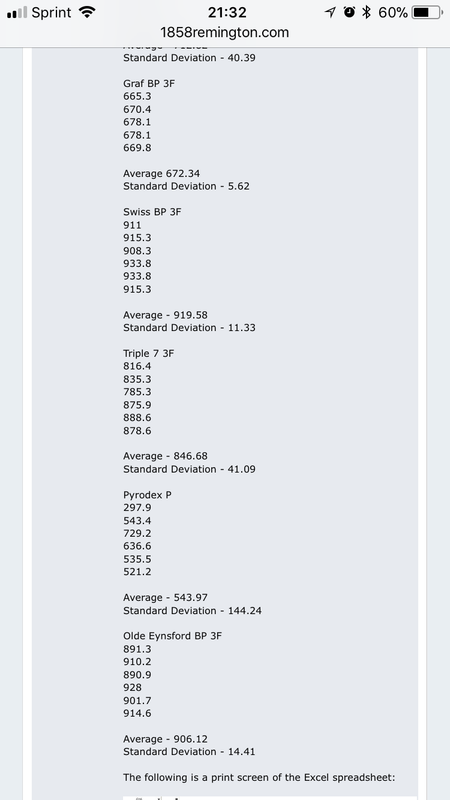
 |
|
|||||||
| Forum Rules | Firearms Safety | Firearms Photos | Links | Library | Lost Password | Email Changes |
| Register | FAQ | Calendar | Today's Posts | Search |
 |
|
|
Thread Tools | Search this Thread |
|
|
#1 |
|
Senior Member
Join Date: September 15, 2015
Posts: 379
|
Conversion Factor for Hodgdon Triple 7
I have used Goex fffg in my black powder revolvers but would like to use Hodgdon Triple 7. I use flasks with volumetric spouts that deliver a designated weight in grains of powder. I know that Triple 7 weighs less but is more energetic. I also know that grains are weight but since the spouts are made to deliver a certain weight in grains of black powder what conversion factor should I use for Triple 7? For example say I use a 20 grain spout for my Goex fffg what spout size should I use for a Triple 7?
|
|
|
|
|
#2 |
|
Senior Member
Join Date: March 20, 2008
Location: High & Dry in Missouri Ozarks
Posts: 2,113
|
I'd use a 20 grain spout. I gave up on all the hoopla on concerning T7 grains out of a spout compared to FFFG of real BP regardless of manufacturer. IIRC Hodgdon loading data used to say that to equal a particular load of real BP, you should reduce the T7 load by 15%.
Here's is a link to the the Hodgdon T7 & Pyrodex data: https://www.hodgdon.com/wp-content/u...anual_2008.pdf |
|
|
|
|
#3 |
|
Senior Member
Join Date: September 15, 2015
Posts: 379
|
Thanks Fingers, the link is comparing Pyrodex and T7 to each other not to Goex. It
The density of T7 is much less than Goex but supposedly produces higher pressures. If you reduce the grains by 15% the volume may still be similar for some loads. I guess what I’m asking is when they designed T7 and Pyrodex did they formulate it and adjust their density so that an equal volume measure would equal thee same pressures/power? Last edited by Minorcan; June 30, 2019 at 08:10 AM. |
|
|
|
|
#4 |
|
Senior Member
Join Date: February 25, 2013
Posts: 590
|
I use a piece of plastic straw cut to fit inside a spout when I want to reduce the charge by a few grains.
|
|
|
|
|
#5 | |
|
Senior Member
Join Date: September 8, 2007
Location: Mississippi
Posts: 16,380
|
Quote:
|
|
|
|
|
|
#6 |
|
Senior Member
Join Date: March 20, 2008
Location: High & Dry in Missouri Ozarks
Posts: 2,113
|
Didn't say the Hodgdon data compared to BP. You'd need to get loading data for whatever brand of BP you were going to use and compare the two. I do not know offhand of anyone that has run such a comparison.
|
|
|
|
|
#7 |
|
Senior Member
Join Date: September 15, 2015
Posts: 379
|
Thanx much Hawg! That’s what I was trying to understand.
|
|
|
|
|
#8 |
|
Senior Member
Join Date: July 7, 2009
Location: Texas
Posts: 1,246
|
Hodgdon’s info regarding the 15% reduction was stated prior to Swiss being more common here and the creation of Olde Eynsford by Goex, which both actually tend to produce slightly higher velocities compared to T7. However I’ve also seen that even with a 15% reduction T7 was well beyond was standard Goex produced. Only actual testing would provide anyone with the actual differences. I’d think a 15% reduction would be a sound place to begin though.
https://m.youtube.com/watch?v=LP_dwo2nThA   gas stations open near me gas stations open near me
|
|
|
 |
|
|